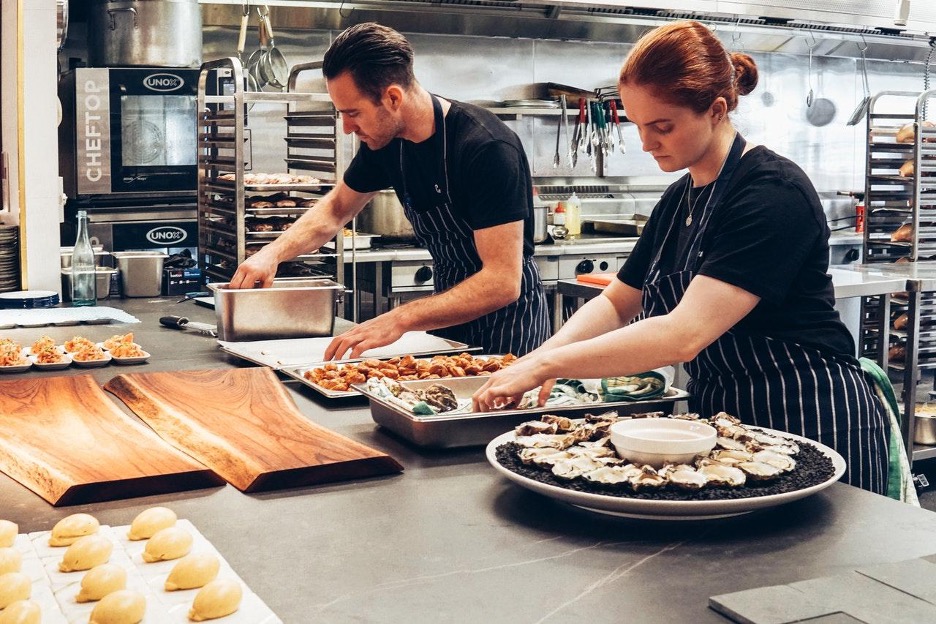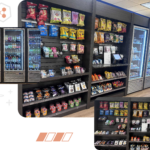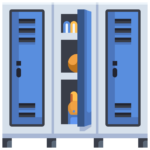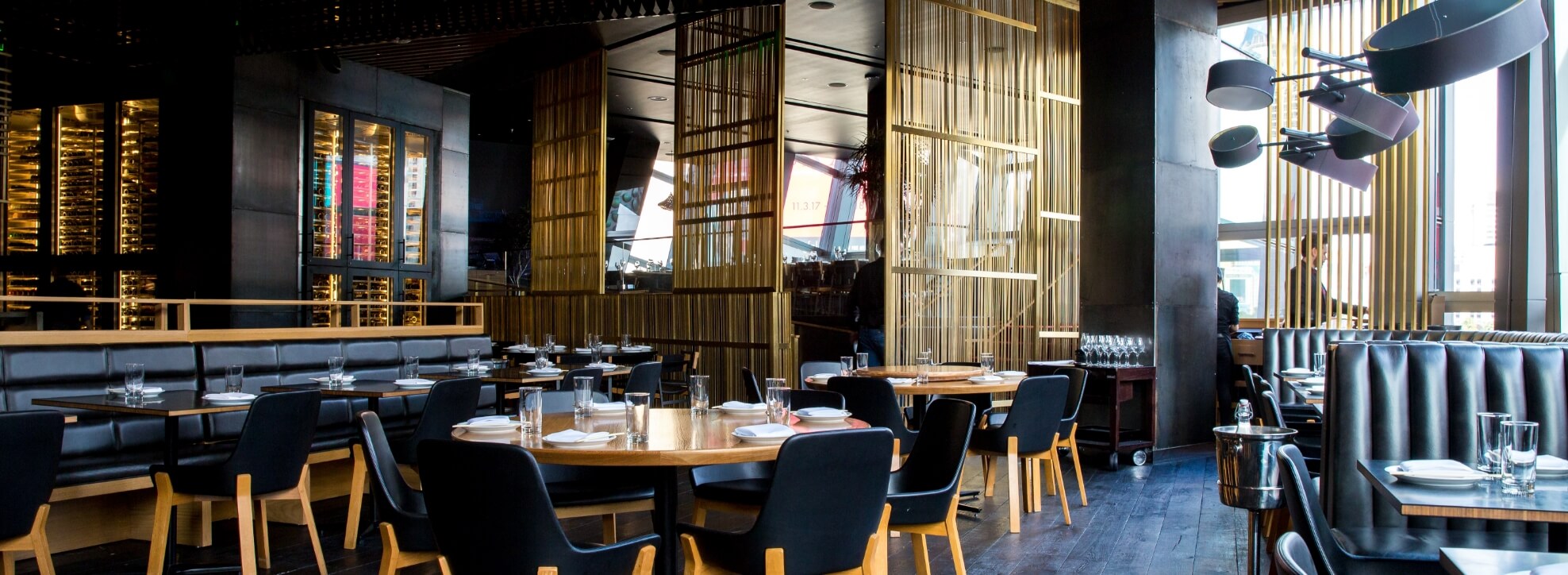
Starting a Cloud Kitchen? Here's What You Need to Know
Whether you’re looking for tips on how to start a ghost kitchen or how to start a cloud kitchen, the following tips will apply. In this guide, we’ll cover everything you need to know to begin your cloud kitchen from scratch.
What is a Cloud Kitchen?
A cloud kitchen (also known as a ghost kitchen, a virtual kitchen, or a shared kitchen) is a relatively new concept but one that’s been gaining steam in the last few years.
The idea behind a cloud kitchen is pretty straightforward: A cloud kitchen is a virtual restaurant where food is prepared and sent to customers for delivery.
If you’re familiar with the concept of “the cloud,” a cloud kitchen runs on a similar principle: In a cloud kitchen, the exchange of goods and payment is handled entirely over the Internet instead of locally. Instead of dining at a restaurant, phoning in a delivery, or even taking out an order, the whole transaction is handled online. Customers place an order and also pay through a website. The customer then receives their order through a delivery service.
While we’re all familiar with the concept of delivery, cloud kitchens operate on a unique model that’s one step beyond a restaurant that delivers. A cloud kitchen operates on a delivery-only model. This often equals low operating costs and higher profits. However, there are definite pros and cons to running a cloud kitchen, which we’ll discuss below.
Before we dive into the benefits and potential drawbacks of cloud kitchens, let’s first discuss how the cloud kitchen model works.
How Cloud Kitchens Work
Here’s the basic template for how cloud kitchens work: In a cloud kitchen, an order is received, the order is prepared and packed, the order is then delivered.
Cloud kitchens operate in facilities that are licensed specifically for commercial food production with no storefront. With that said, there are multiple cloud kitchen models. Here are the most common cloud kitchen models:
Single Brand Cloud Kitchen
This type of kitchen is operated by one brand and only prepares items from a limited menu for that particular restaurant. This kitchen specializes in a specific cuisine and operates on a delivery-only basis.
This is the original and most common type of cloud kitchen.
Multi-Brand Cloud Kitchen
This type of kitchen is a single kitchen facility used by multiple brands of different cuisines. This kitchen may be exclusively leased to one business that has multiple brands. While the one business may offer different cuisines under its various brands (Italian, Chinese, American, etc.), the kitchen does not have a physical storefront. Instead, the business relies on marketing to establish itself as unique delivery-only restaurants. Orders can then come from multiple menus, each from a different cuisine. The kitchen staff must be versatile to handle different cuisine preparation.
Single Brand With a Storefront
This type of kitchen is a mix between a traditional cloud kitchen and a take out restaurant. It has all of the components of a cloud kitchen but it also has a storefront that allows customers to physically visit a location, place an order, and then pick it up. With this model, customers can see their food as it’s prepared. Some customers prefer to see their food as it is prepared. However this type of cloud kitchen can also handle deliveries.
Rented Bare Bones Kitchen
In this type of cloud kitchen, the space is rented by one or multiple brands, and it contains no storefront. The facility is an empty kitchen that may be bare bones, providing only the basic utilities. Each brand brings its own equipment and materials to the kitchen.
Rented Basic Kitchen
The rented basic kitchen is similar to the bare bones kitchen model, except that the rented facility actually provides built-in kitchen equipment. Some of these kitchens can also accommodate storefronts.
Separate Location Cloud Kitchen
This model is used by restaurants that want to offer delivery or takeout from a separate location. A restaurant owner may choose to do this because the restaurant’s current kitchen is busy and operating at max capacity. This model also allows a restaurant to deliver to a larger area, especially if the second “location” is on another side of town.
Aggregator Cloud Kitchen
This type of cloud kitchen is managed by a company known as an aggregator. A food aggregator works with multiple restaurants, providing a cloud kitchen that can offer deliveries.
Other types of cloud kitchens are operated by catering services, meal prep companies, and packaged food. These kitchens offer low cost alternatives that enable restaurants to serve their customers.
The above examples are only a few of the many types of cloud kitchens available. You can use one of these as a template for creating your own cloud kitchen.
What are the Benefits of a Cloud Kitchen?
Why should you invest in a cloud kitchen? Here are the pros of starting a cloud kitchen:
Low Startup Cost
Starting your food business can require a lot of capital upfront. However, when you’re leasing a commercial kitchen, you will instantly lower your startup cost. Depending on the type of kitchen you lease, you won’t need to invest in equipment upfront.
Quick Start
Because you’re leasing a cloud kitchen instead of building (or renovating) one from scratch, you can get started right away. You won’t be delayed by inspections and bureaucratic paperwork.
Lower Operating Costs
If you operate a traditional restaurant, you’ll be responsible for paying for everything from utilities to maintenance costs. For example, the cloud kitchen provider will handle equipment repairs. It will also cover property taxes, janitorial services, and more.
When leasing a virtual kitchen, you can save on those costs. You can also get by with a skeletal kitchen crew since there won’t be a need to hire for the front of the house. Also, depending on how many orders you have coming through, you may only need one cook for your kitchen.
Lower Payroll Costs
Since you’re hiring fewer people to operate your cloud kitchen, you’ll also save on payroll costs. And depending on your business model, your staff may only need to work at certain times.
Increased Expansion
When you operate a cloud kitchen, you can expand your restaurant’s reach. You can offer delivery from your main restaurant and also from the cloud kitchen, which can expand your delivery area. This allows you to reach a larger area of customers.
Convenient for Customers
Modern customers look for convenient shopping experiences. Some customers are more likely to try a restaurant that offers delivery services. By offering this service to your customers, you’ll make it easier for them to order from you if they don’t feel like going out to eat.
More Customer Analytics
When you operate a cloud kitchen, every transaction happens through your restaurant point of sale (POS) system. This allows you to learn a great deal about your customers.
Through the use of a cloud kitchen POS system like Truffle POS, you can discover your customers’ menu preferences and when they’re most likely to place an order. This information can improve your marketing. You can also see if it’s been a while since they’ve placed an order, in which case you can then send out a “We miss you” email or SMS message.
What are the Top Considerations of a Cloud Kitchen?
Before creating a cloud kitchen, what do you need to know? Here’s a look at the top factors to consider before starting up your own ghost kitchen:
Lower Visibility
A brick and mortar location provides a marketing advantage for any restaurant. Some customers will simply drop in to a restaurant because it’s nearby. They may drive or walk by the restaurant and be curious enough to pop in and glance at the menu. However, when you operate from a cloud kitchen, the future success of your restaurant will depend on your ability to market it to your target audience.
Lack of Autonomy
The majority of food businesses that operate with a ghost kitchen have minimal staff. They often partner with delivery services to provide deliveries to their customers. However, when you partner with another company for deliveries, you can’t control how and when they deliver. The customer may have a negative experience simply due to the delivery service, and unfortunately, they’ll be more likely to blame your business than the delivery driver, especially if the food is cold.
How to Start Your Own Cloud Kitchen
Now that we’ve weighted the pros and cons of cloud kitchens, here’s everything you need to know to successfully start your own:
Select a Cuisine Concept
What cuisine would you like to serve in your cloud kitchen? To answer this question, you can’t simply go with your gut. You must do a lot of research to determine if your concept will sell in your chosen area. The easiest way to do this is by looking for competitors in the space. Specifically look for competitors who offer the same type of cuisine in your chosen area and also look for competitors who operate from cloud kitchens. The presence of competitors is a good thing. It lets you know that there’s already a market for what you’d like to sell.
Define Your Customer Type
Who will order from your cloud kitchen? Just like you must research to determine if a cloud kitchen will be profitable in your selected area, you must learn more about your target audience.
Decide on Your Location
While you won’t need to consider the same location factors with a cloud kitchen as you do with a traditional brick and mortar restaurant, location is still important. Your cloud kitchen should be in a location that allows you to quickly service your target area. If you do want to operate a storefront from your cloud kitchen, you will need to choose a location that looks safe and attractive to your customers.
Choose Your Equipment
One of the only major costs you’ll have for your ghost kitchen is in equipment. The cloud kitchen provider may offer basic equipment, such as stoves or countertops, but you’ll likely need to purchase most items, such as blenders and other electrical machines. Be prepared for this upfront cost by pricing all of these items ahead of time.
Kitchen Management Software
One of the most important tools you’ll need to run your cloud kitchen is your restaurant point of sale (POS) system. Your POS system will enable you to do several things, including:
- Manage all of your orders in one place
- Process payments
- View your order history
- Get inventory updates automatically
- Get instant profit reports
- Track and analyze your productivity
- Manage deliveries and drivers
Looking for more information on how to start your own ghost kitchen?
Truffle POS allows you to scale your cloud kitchen quickly and grow your revenue exponentially. Click here to learn how other cloud kitchens have used Truffle POS to build successful food businesses.





